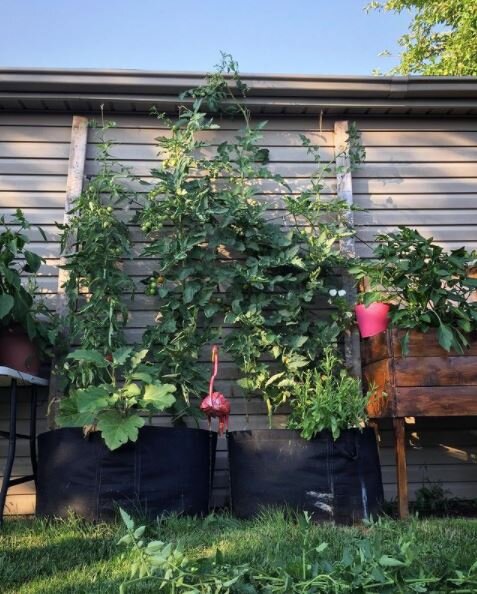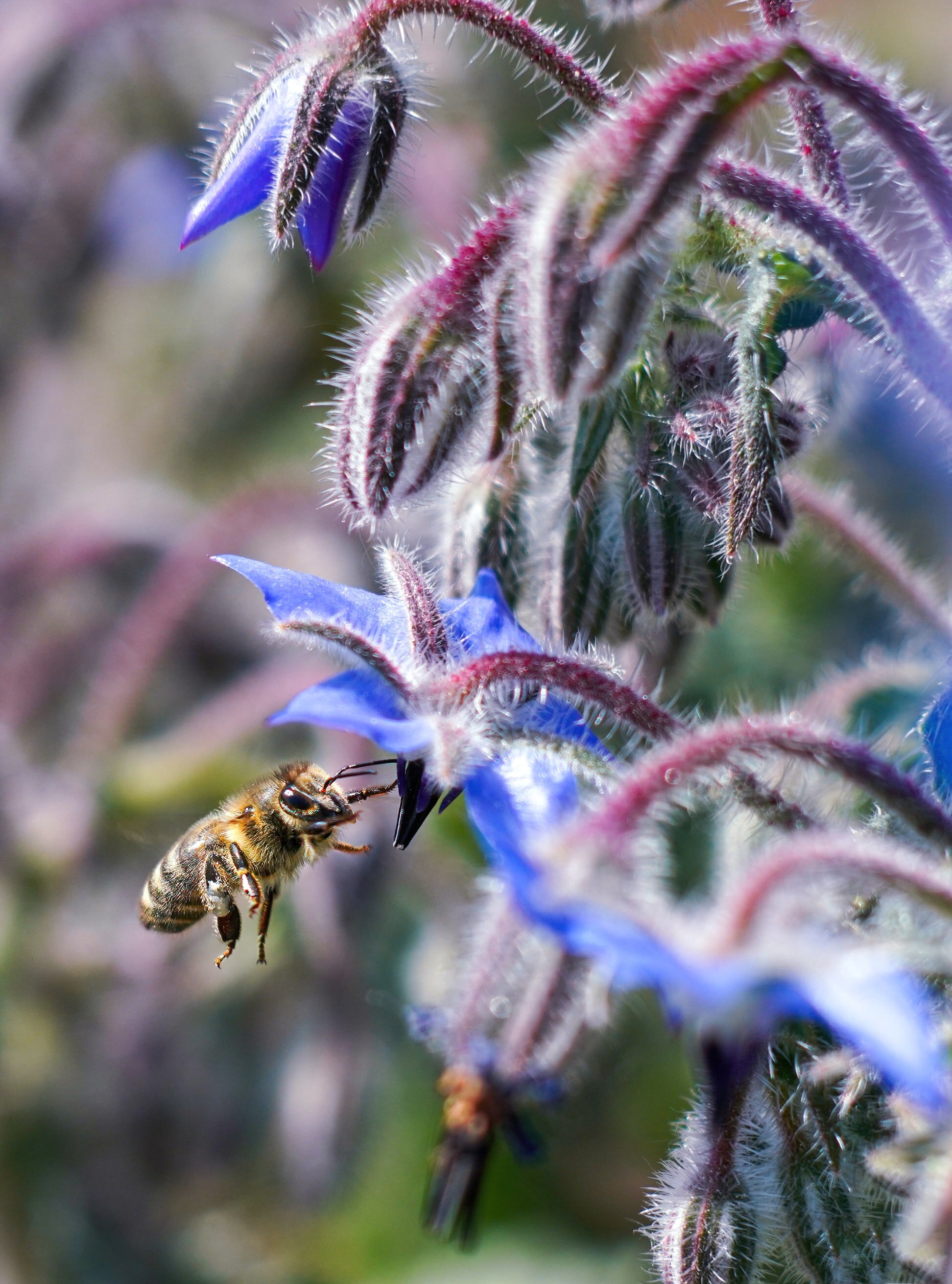How to Care For Your Free Vegetable Seedlings
Thank you for swinging by and providing a home for my excess seedlings. Growing more then we need and being able to share the wealth brings our household so much joy. The feedback from last years give away table rocked my world!
I was lucky enough to partner with Magidome and build myself a little geodome greenhouse this year, which is how growing this much was possible!
This is where all these plant babies grew up!
Each seedling was grown in promix organic potting soil. No synthetic fertilizers or other amendments were used.
If you amended your soil before planting I would recommend a drink of compost tea (available locally from Crooked Farmz, check out the free yard waste bags we put out for a coupon!) or a shake of chicken poop pellets (available on Amazon and Canadian Tire) once flowers begin to set. These fertilizers are gentle, natural, won’t cause burns and helps keep squirrels away.
If you are a new gardener make sure to check out my posts for beginners. Gardening does not need to be expensive but it can quickly escalate into that. I hope that these seedlings produce both fruit and seeds that you savour, but also collect. Plant the seeds next year and perhaps spread the bounty with your own network!
Tomatoes
Plant tomatoes as deep as you can, pulling off any branches that fall below or near the soil line. New roots will form along the stalk that is below soil giving you a stronger, more drought tolerant plant. Less stress = more fruit!
Plant them in full sun, water when the top 2” of soil is dry (stick your finger in). If planted in ground give them long, infrequent, soaking drinks of water rather then short frequent ones. This will encourage the plant to send roots down rather then keeping them near the surface and exposing them to more fluctuations.
Blossom end rot and cat facing are less common on cherry varieties then big tomatoes. The cause is not a lack of calcium in the soil but rather an inability to move nutrients efficiently through the plant due to irregular access to water. A plant is vascular, meaning that it’s skeleton is made up of water. You hopefully will not experience this with these varieties but if you do, reflect on your watering practices before adding anything to your soil
I prune my tomatoes to a single stem and use a string method to guide them upwards. There are many ways to support indeterminate tomatoes, but they will grow far above what a tomato cage can support.
Varieties:
White Bianca - a pack of free seeds from pepper Joe’s that I decided to finally use after many years. Bianca means white, so this tomato is “white white”, but truthfully that’s all I know about it. My assumption is it will be an indeterminate variety, but is it big or small, meaty or juicy… that is the surprise!
Organic Non-GMO Blondkopfchen Cherry Tomato - a huge hit with our family a few years ago and one I’m very excited to have back in our collection! The seeds are from Urban Harvest.
Black Cherry Tomato Seeds 2380 - a Russian variety prized for its flavour and unique appearance. The seeds are from OSC.
Cucumbers
Plant in full sun. They will crawl and sprawl, but you can train them to climb up trellises and fences meaning you lose less garden space to these real estate hogs. Growing vertically helps with airflow and makes flowers more visible to pollinators.
Last year was horrible for cucumber beetles, which causes wilt but other common ailments include powdery mildew. When watering, water the soil not the leaves, and if possible water in the morning to prevent powdery mildew. Growing vertically increases airflow which helps prevent this issue.
Varieties:
Armenian Cucumber - Each year I try, and each year I fail. Last year cucumber beetles wiped out my crop. The year before, poor watering of whatever the raccoons didn’t dig up spelled the end. I’m hoping this is the year! If it is, I’ll have more guidance to offer. For now, treat it like any other cucumber.
Marketmore Cucumber - to offset the other varieties finniky nature, a resilient and disease resistant more traditional, slicing variety.
Cucamelon or mouse melon - a fun one for kids! They are the size of grapes, look like a watermelon but taste like a cucumber. I like to grow mine in a pot. I’ve used a plant shelf, tomato cages etc for it to climb. I find it gets messy and is harder to train then typical cucumbers. Seeds are easy to save for following years.
Flowers
Marigolds - An orangey-yellow variety that is my go to companion plant for vegetable gardens. I tuck them in between my vegetables wherever a space is left. They help draw in pollinators and act as pest control by drawing beetles and the like away from the plants you truly care about. They are pretty and make decent cut flowers too. Seeds are easy to save for following years.
Borage - another new for me flower. A blue flower that is edible and also a pollinator magnet. Rumoured to be an excellent companion plant.
Others
Brussel Sprouts - Each year I pick something new to try and this year is Brussel sprouts. Seeds are from OSC and I’ve followed their directions so far. We’ll see how they do!
Onions
Give them lots of sun, loose soil and a good amount of space in between plants so that a good sized bulb can form.
Early Yellow Globe Onion - a typical “cooking” onion with great storage life.
Walla Walla - a sweet onion with short shelf life. Not one for storing.
Seeds
Kids Seed Pack
Big, unusual seeds that will develop into unique crops! Easy for little hands to plant, and a great way to teach how seeds are unique. Includes the following:
Scarlett Runner Bean - Requires a trellis. Develops lovely orange flowers and long pink, edible beans.
Bush Bean - No trellis required. A small, bush variety that makes slender and tender beans.
Bottle Gourd - Grow your own bird house!
Pumpkin - “Metro” Big Orange. Metro, as in the grocery store. Saved the seeds ourselves, exact variety is unknown.
White pumpkin - We picked up a number of pumpkins from a farmer last fall and saved the seeds. One was a bit bigger then a basketball, and the other fit into the palm of your hand, both white in colour. Exact variety is unknown.
Calendula - surplus collected from last years crop.
There is nothing wrong with the seeds, though some are a few years old. I love certain crops and act on autopilot when getting new seeds, before checking my existing inventory and now have a surplus of certain ‘staples’.
I’d love to see your harvests and your gardens as you grow. You can tag me on Instagram @buying_thyme.
It is my goal with Buying Thyme to connect the community to nature and practice sustainability practices so we can better our patch of the ecosystem. Our flowers invite you to slow down, savor simple joys, and celebrate the beauty of the seasons wherever you take them, but our blog teaches you how you can apply everything we have learned, on your own property! For our Southern Ontario specific gardening tips make sure to peruse our other blog articles here.
Buying Thyme is your local source for seasonal, sustainably grown flowers. Visit our flower stand where we offer locally gown, cut flowers, to Durham Region. All grown right here on our North Oshawa/Hampton micro flower farm.
Unlike most florists offerings, these flowers have a negative carbon footprint with no transportation, sprays or pesticides. Each year our collection of Ontario native plants grows, which not only offers more beautiful flowers to our clients but also contributes to restoring the local ecosystem.
To learn more about our floristry services and products or to visit the flower stand click here.




